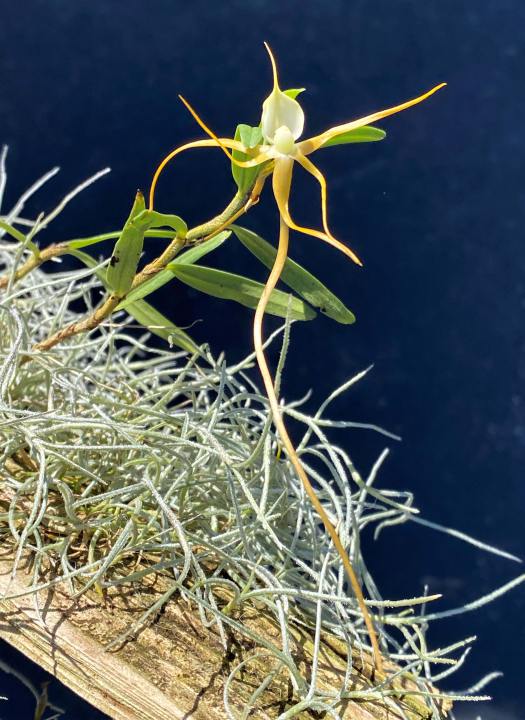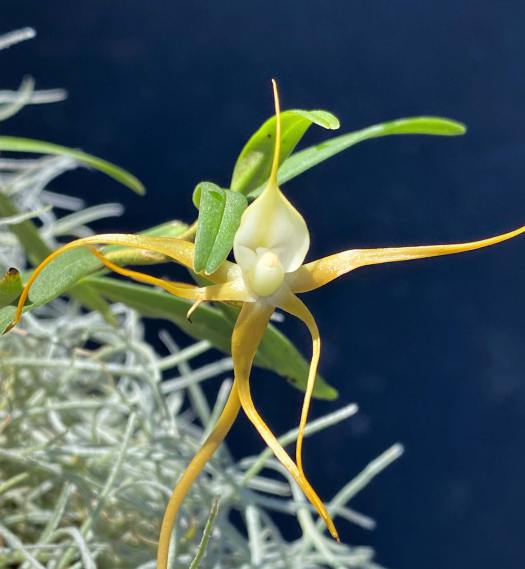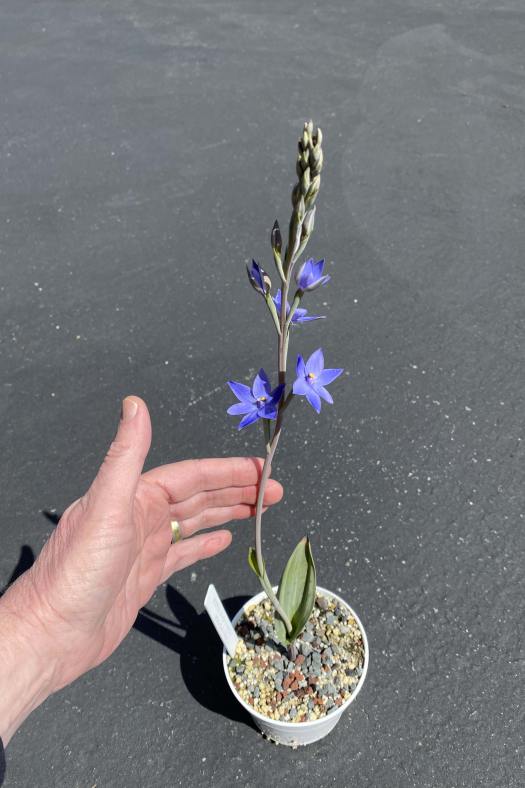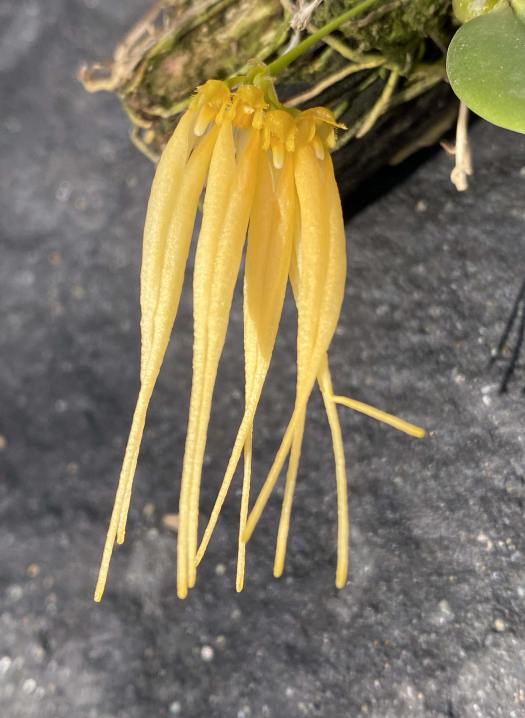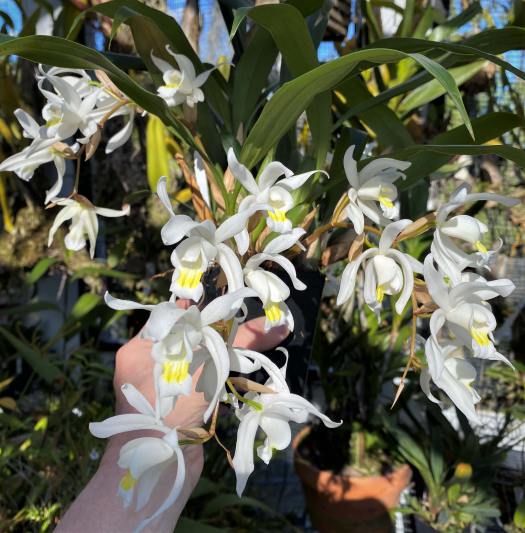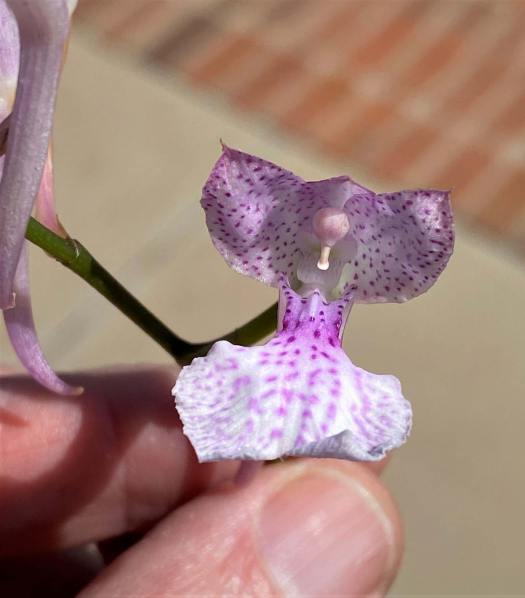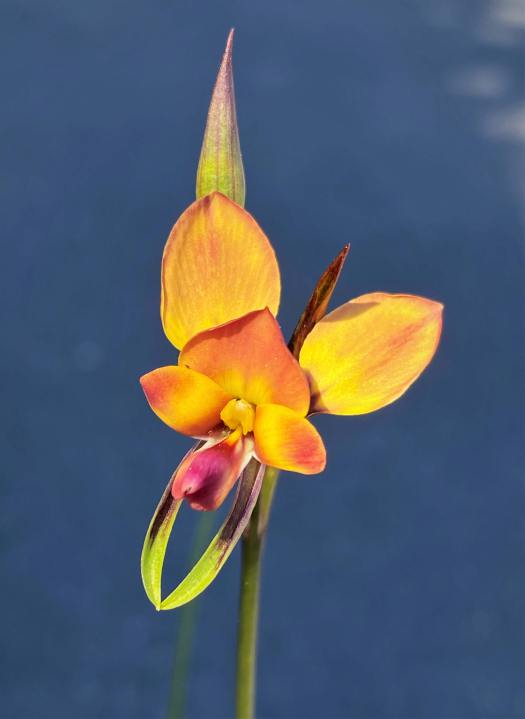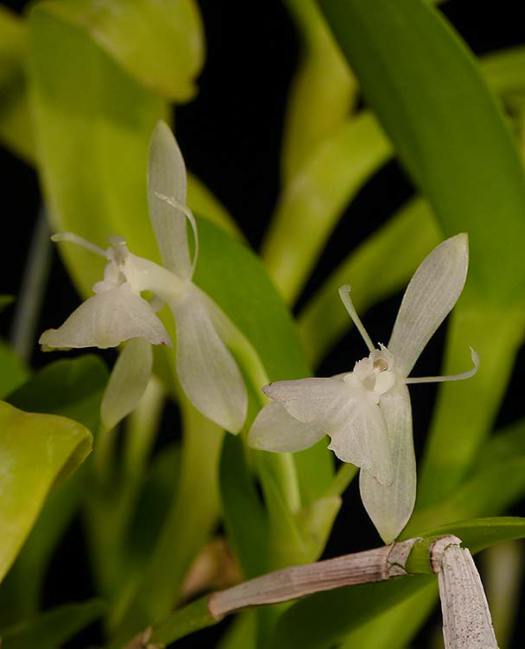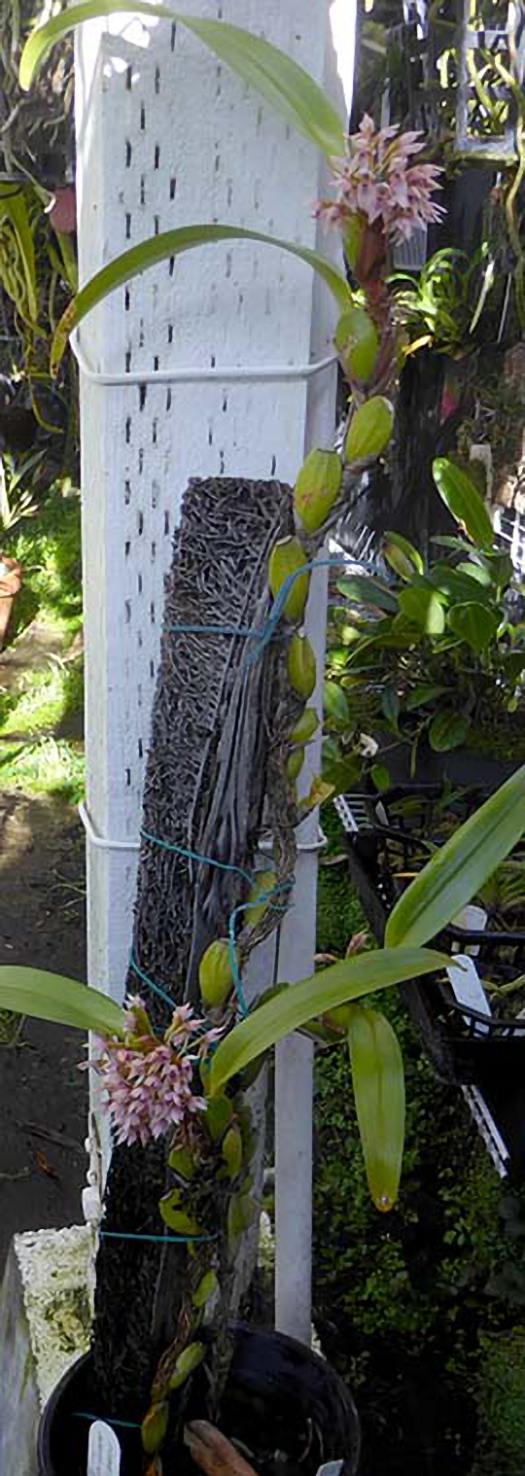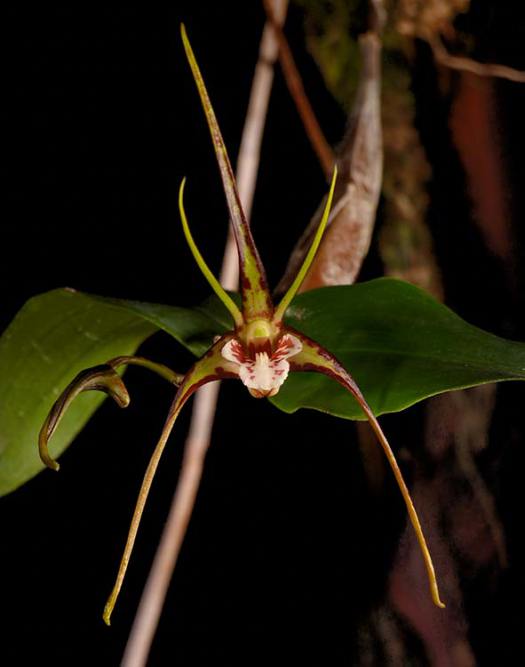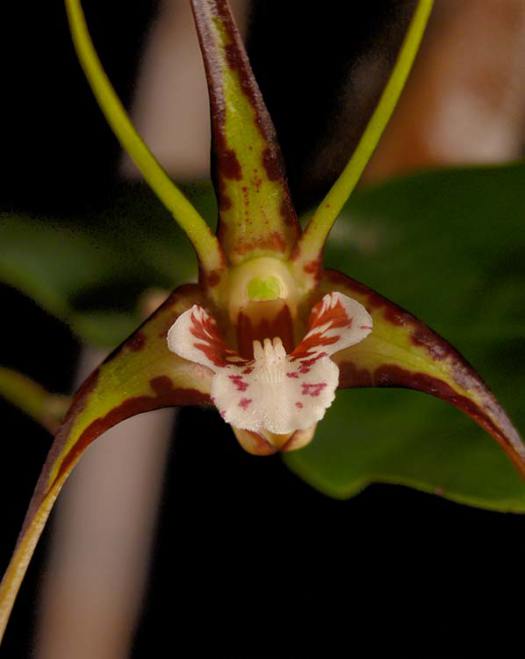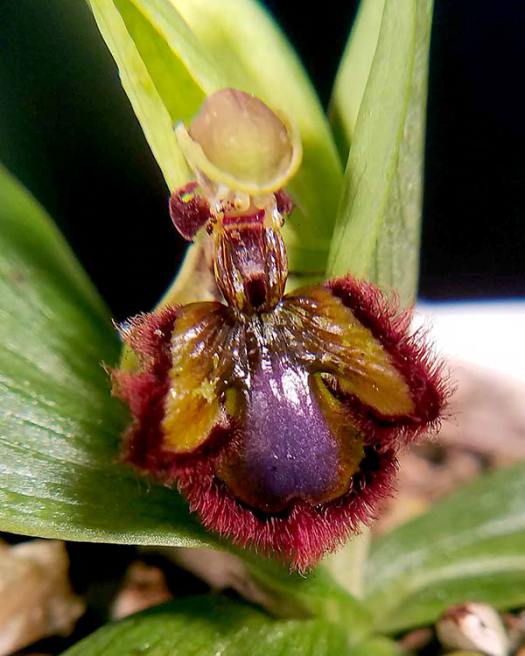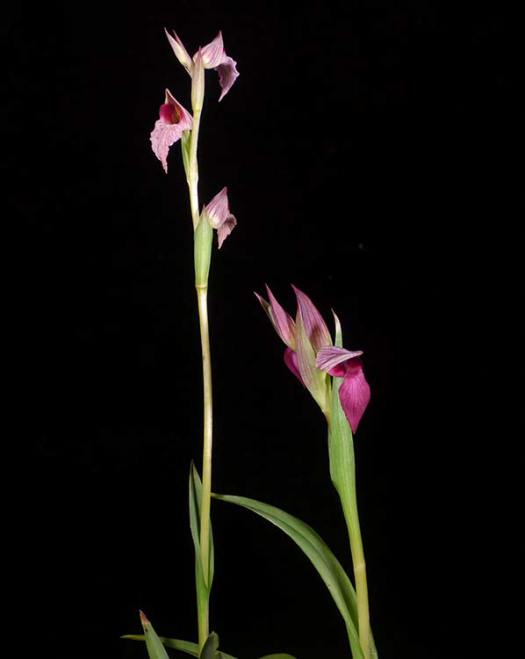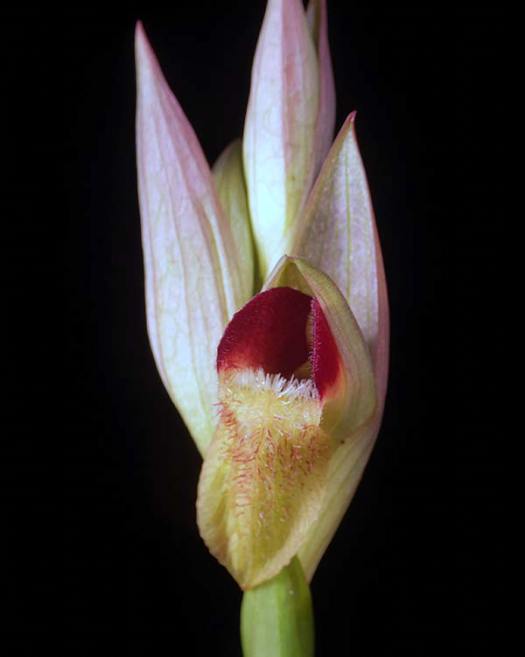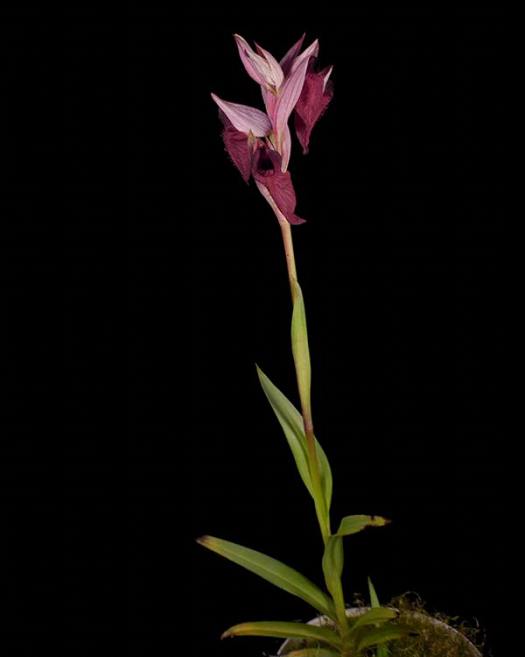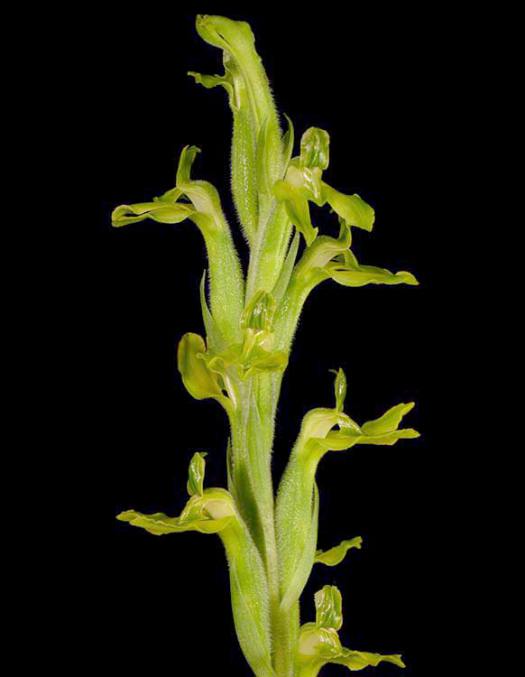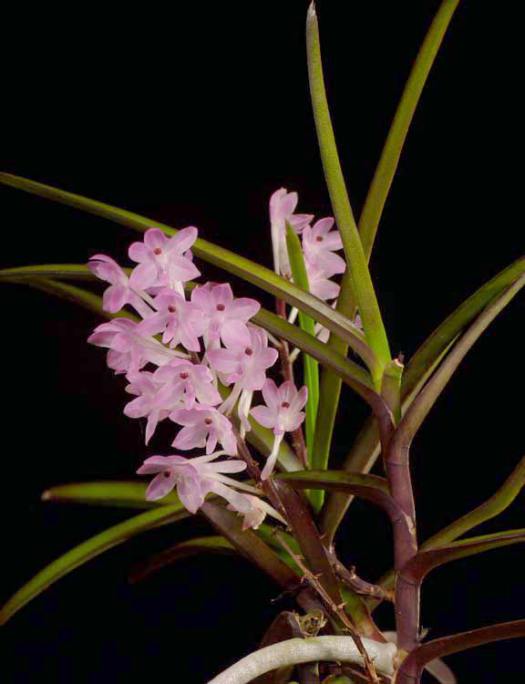April 2020
From Roberta Fox:
|
|
Outside in the Back Yard: |
|
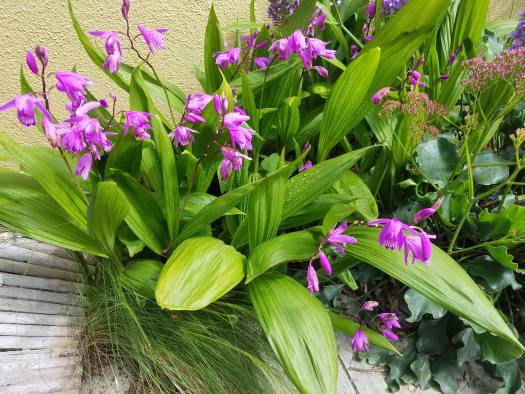
Bletillla striataThis hardy terrestrial can grow in the ground as well a in a pot. This one, in my horrid clay soil, is doing better than the potted ones. |
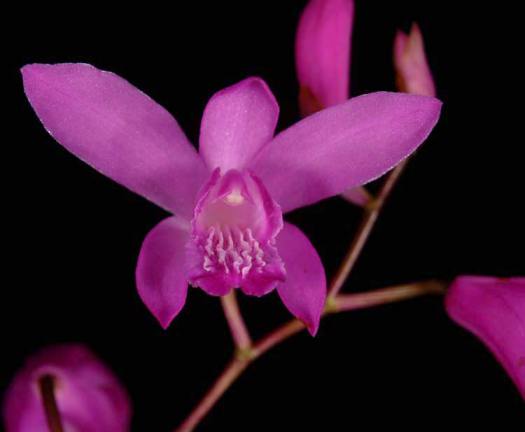 |
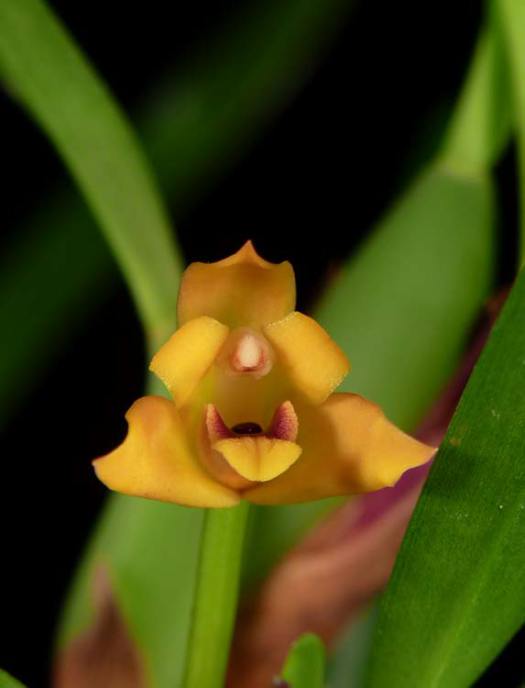 |

Maxillaria variabilisThese bloom several times a year. It lives up to its name. In addition to this yellow form (left) and red with bronze tips and a yellow tip on the lip (above), there is a range of color from almost black through various shades of red, to white. |
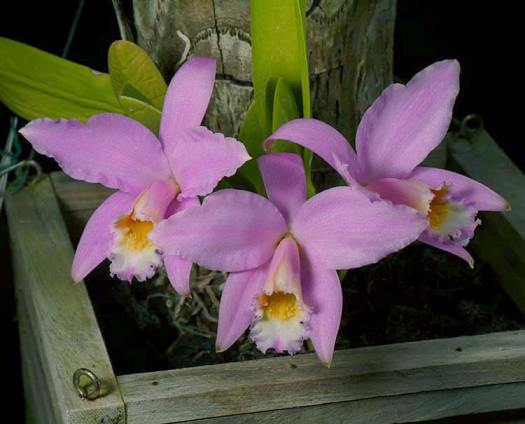
Cattleya (Laelia) jongheanaThe flowers of this Brazilian species are bigger than the plant 4-6 inches across. The species belongs to the group Hadrolaelia, in which the buds are enclosed within the developing new leaf (rather than in a sheath.) Therefore they can seem to appear rather suddenly. |
|
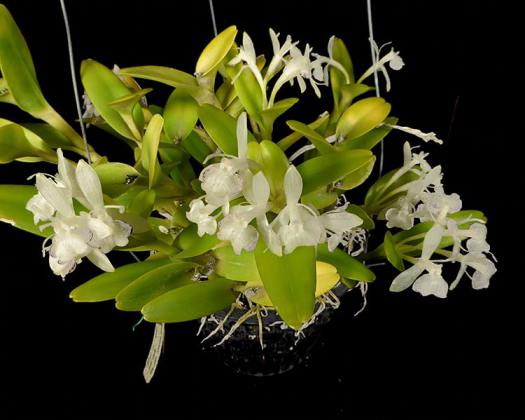 Epidendrum trialatumFlowers are fragrant. It is spilling out of a 4 inch basket, the medium is pretty much gone, but it is growing well that way so I have no intention of disturbing it. |
|

Maxillaria densaIndividual flowers aren't spectacular, but there are lots of them. Pseudobulbs just continue to grow higher. Don't remove sheaths in the internodes between pseudobulbs - the roots run through them, all the way down to the pot. Eventually those sheaths fall off by themselves, and the elaborate root system is visible. |
|
Dendrobium tetragonum var. giganteumScott had one of these last month. It can bloom several times a year, often on old, leafless canes. The canes are distictly four-sided, as implied by the name. Any of the Australia Dendrobium hybrids with narrow segments and red color are very likely to have this species in their background. |
|
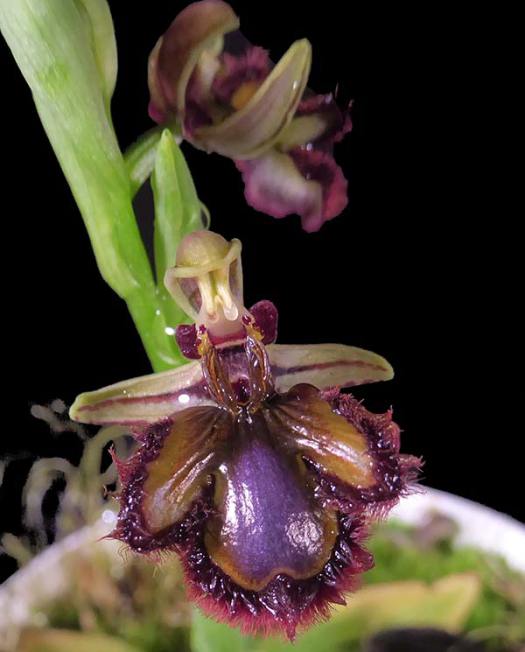 |
|
Ophrys speculumI love this perfect little bug. It grows throughout the Mediterranean area. |
|
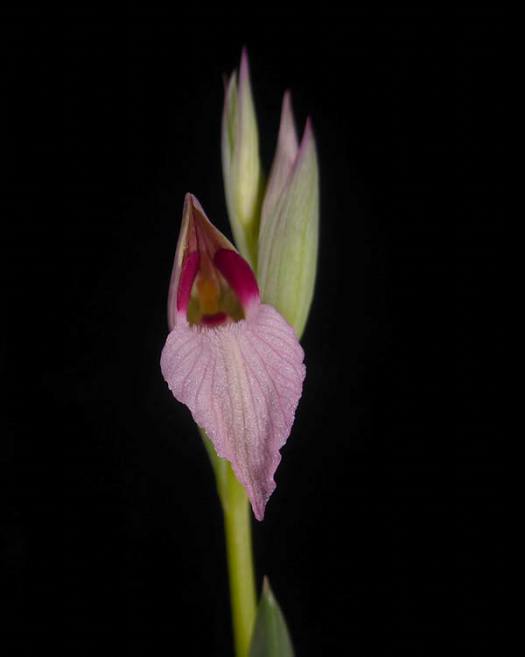 |
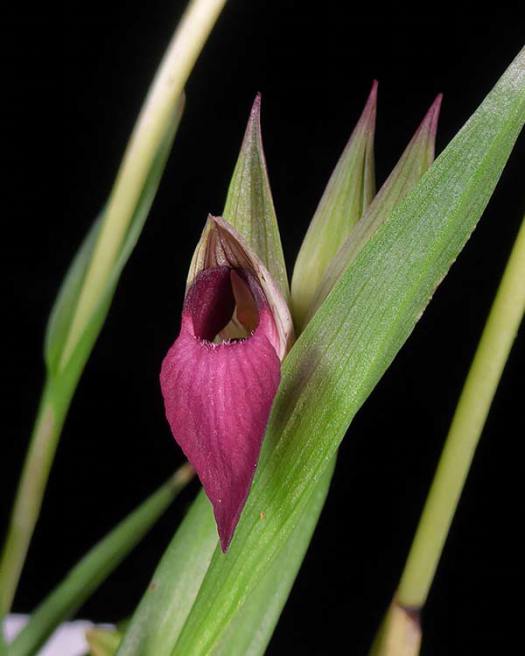 |
Serapias linguaThere is a lot of variation in this species. My photographer friend, Ron Parsons, assured me that these were the same species. I ordered three tubers of Serapias lingua, got these two very different ones, and two Ophrys as well (based on the leaves, one bloomed) |
|

Ophrys fuscaMy "bonus plant" with the Serapias. Ron Parsons provided the ID. |
|
Serapias bergoniiThis has the largest flower of any of my Serapias. It is native to the eastern Mediterranean. |
|
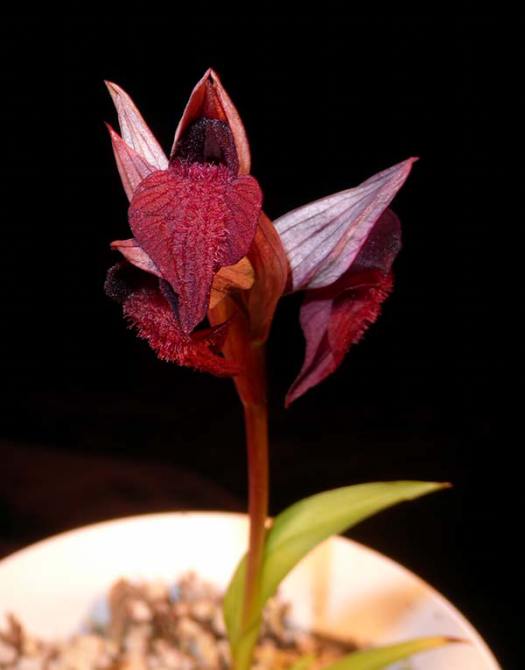 |
|
Serapias cordigeraThis one is big, and very reliable - one of the first of the Mediterranean terrestrials that I bloomed, several years ago. |
|
 Diplocaulobium (Dendrobium) aratriferumLight scent of watermelon. These flowers are very ephemeral - if they last a day you're lucky. I have had at least one "attempted" blooming before this, nice buds but they never opened (and I do look at this one every day) Finally, it rewarded me. Taxonomically it has been lumped into Dendrobium, but it certainly looks and behaves differently than any Dendrobiums that I know about. |
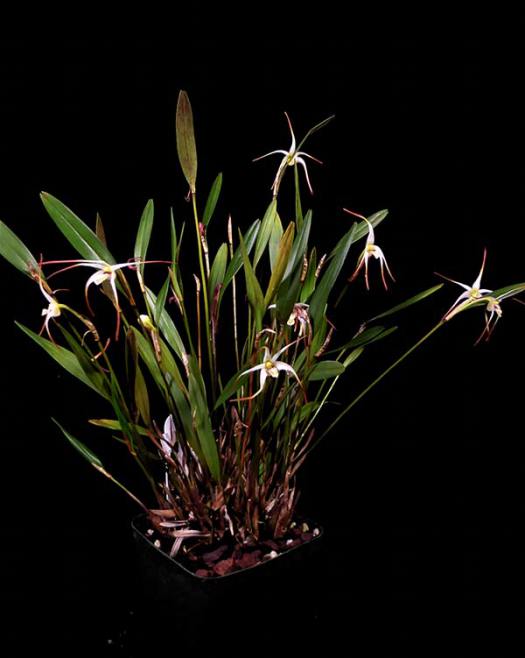 |
 |
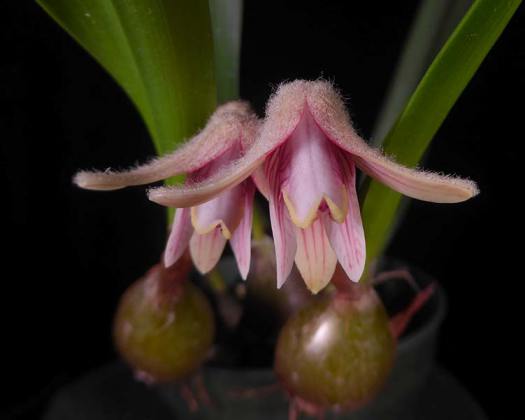 Campanulorchis globiferaClosely related to Eria, but at least for now, a separate genus. It is fragrant, and the buds (and backs of the opened sepals) are fuzzy. And I love fuzzy flowers!
|
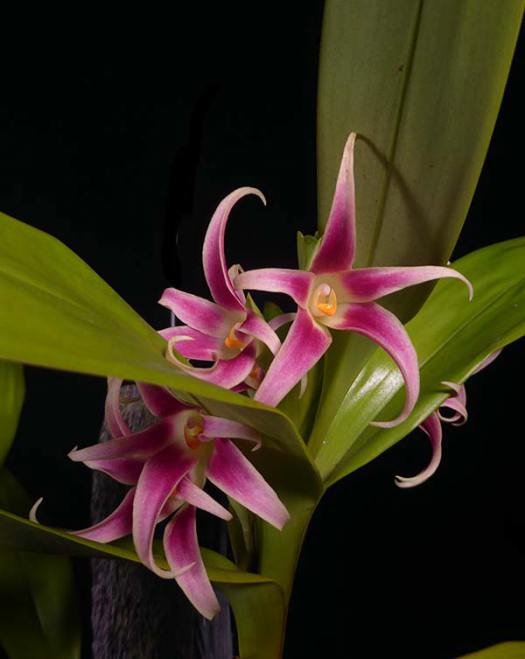 |
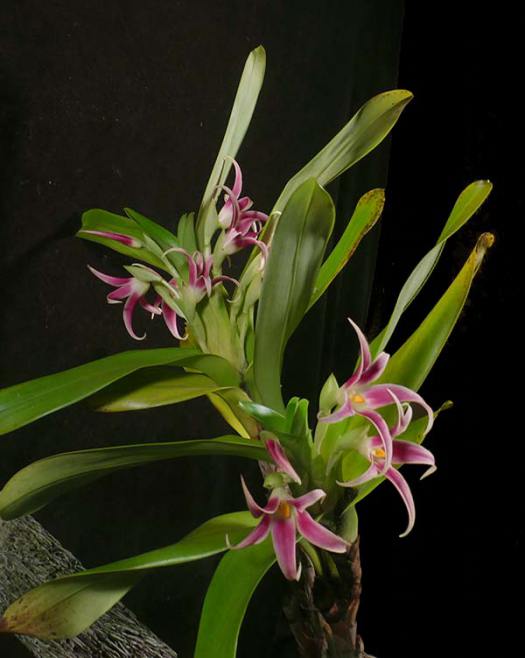 |
Maxillaria bradeorumThis was a cutting, mounted on a large piece of tree fern. As it has matured, it has become more floriferous. I can see where it has the potential to be quite large, but for the moment is growing mostly vertically, keeping the footprint rasonable. |
|
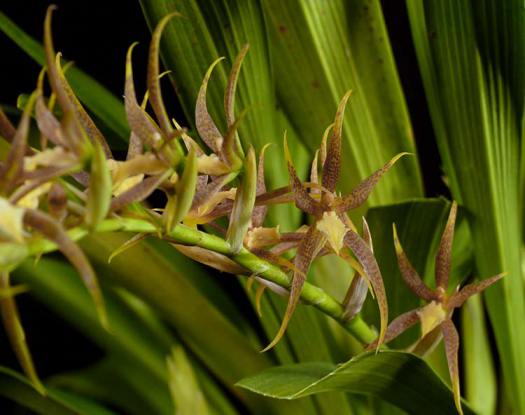
Brassia (Ada) rolandoiColor isn't dramatic, but lots of long-lasting flowers. |
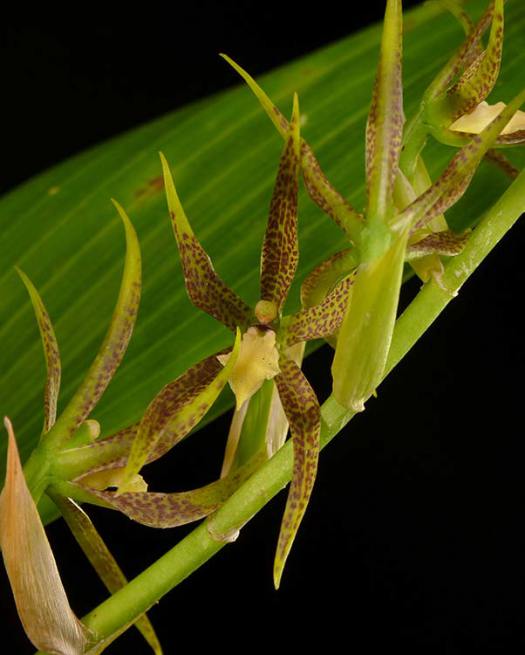 |
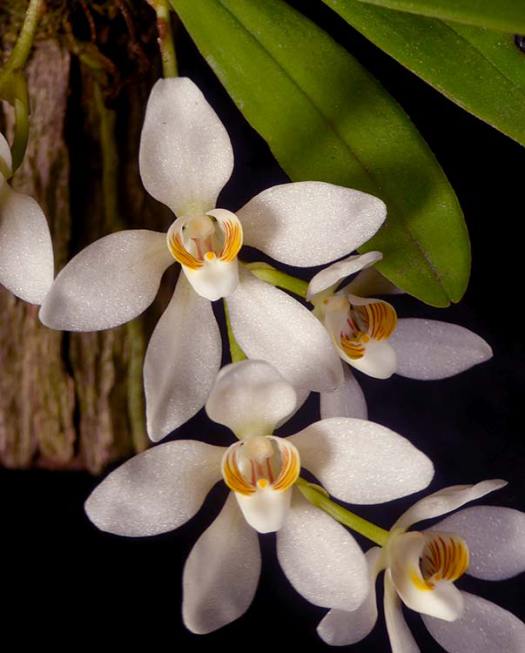 |
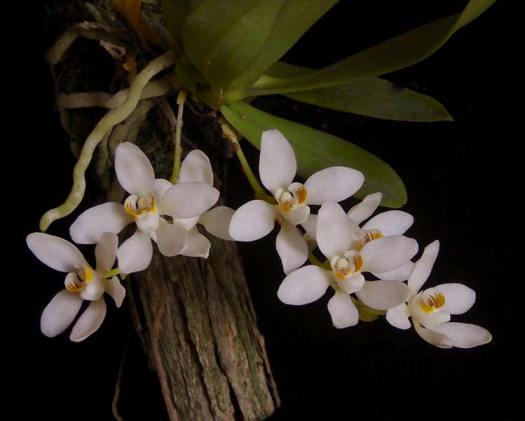
Sarcochilus falcatusA miniature Sarcochilus with pristine white flowers. It grows well mounted on a small stick. |
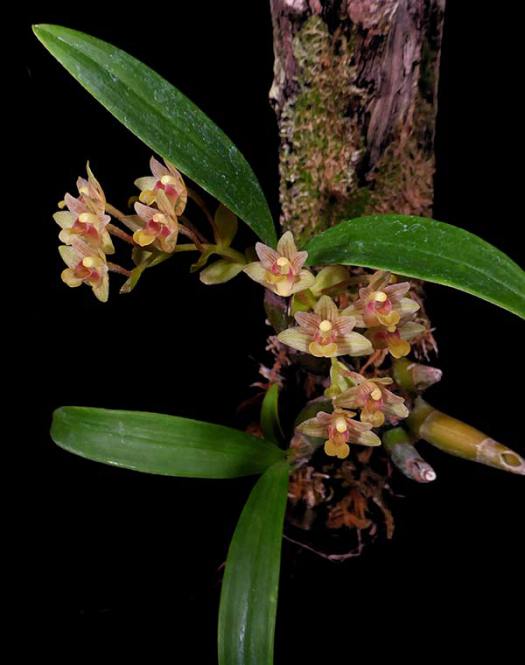 |
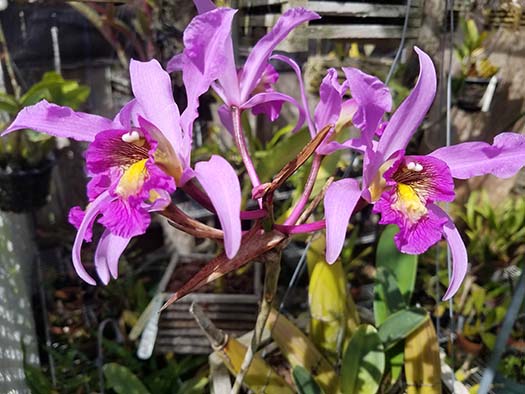
Laelia superbiensThese usually bloom in November. This one is late, but a nice blooming. Spike is about 4 feet, on a fairly young plant. |
Eria amicaGrows shady and damp. |
|
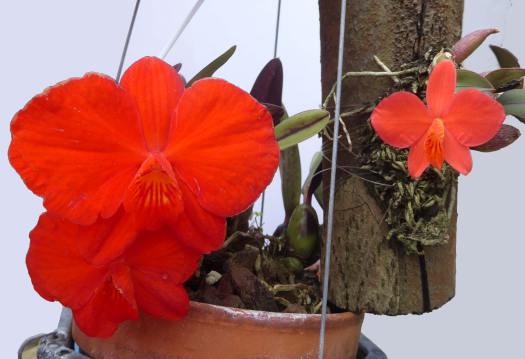
Cattleya (Sophronitis) coccinea and mantiqueiraeThe S. coccinea is a tetraploid, with 3 inch flowers (much bigger than the plant). S. mantiqueirae is almost as colorful, but flower is only about an inch. It's fun to see them side-by-side. |

Rhyncholaelia glaucaSweetly fragrant in the evening. This one came from Richard Hess. Thanks, Richard! |
.jpg) |
.jpg)
Thelymitra x-macmillanii x Thelymitra glaucophyllaNot species, not even quite a primary hybrid (a red natural hybrid crossed with a blue species) but it looks like this is going to be the only Thelymitra that I get, unless something spikes really late. I looked up the photo of Thel. x-macmillanii, and I have Thel. glaucophylla (which put on a good show last year) and I don't think the combination is an improvement on nature but it's a Thely. |
In the greenhouse... |
|

Sarcoglottis sceptrodesThis species has beautiful leaves, so it is attractive when out of bloom. To me the weird flowers look in profile like seahorses, or maybe dragons. When it finishes blooming, the leaves die back but new rosettes start right away. It doesn't need much light, so I think it would make a nice houseplant in the absence of a greenhouse. It grows in well-drained potting soil (like cactus mix with some fine perlite mixed in). |
|
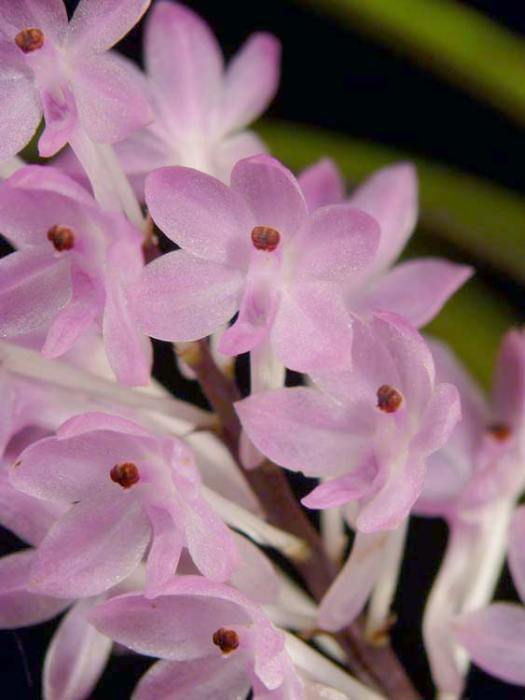 |
|
Ascocentrum christensonianumThis plant grows in a basket with minimal medium. |
|
 |
 |
Cattleya lueddemanniana f. coeruleaThis is one of the few Catt species that I can't grow outdoors, but it is so pretty that I am willing to give it a bit of greenhouse space. |
Dendrobium auriculatumThis one is mounted, and blooms occasionally, on bare, leafless canes. My potted one is more prolific, but this one is also lovely, with flowers coming out of almost nowhere. |
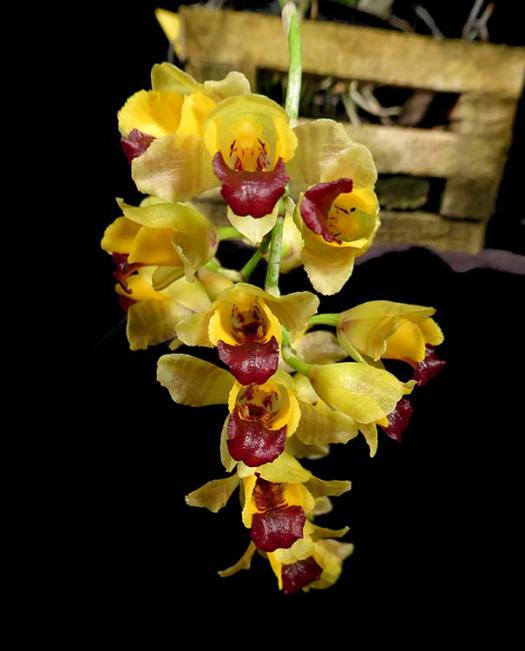 |
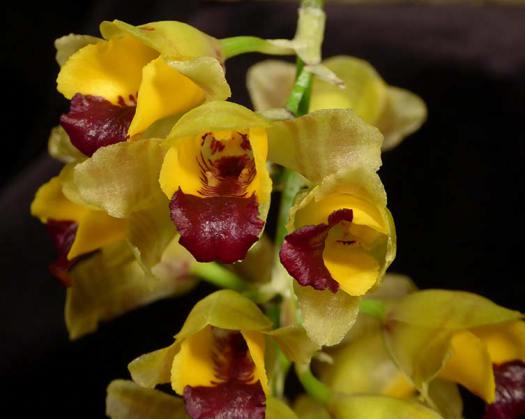 |
Baptistonia echinataFlowers look vaguely like bees. The plant is in a 2-inch basket, which I placed in a 4-inch wood basket to give the roots some growing roon without disturbing them. |
|

